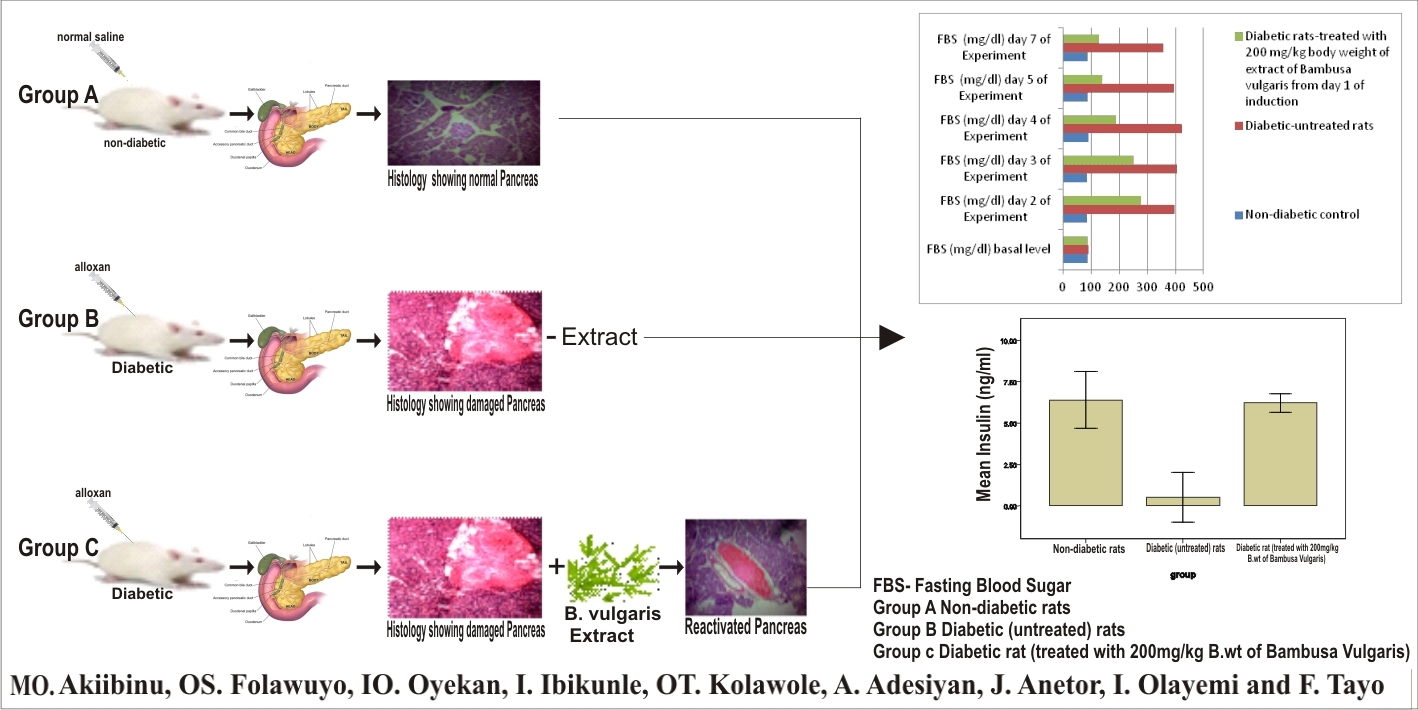Previous issue | Next issue | Archive
Volume 10 (1); 25 March, 2020Research Paper
P otentials of Aqueous Extract of Bambusa vulgaris to Reactivate β-Cells of Pancreas in Alloxan-Induced Diabetic Wistar Rats.
otentials of Aqueous Extract of Bambusa vulgaris to Reactivate β-Cells of Pancreas in Alloxan-Induced Diabetic Wistar Rats.
Akiibinu MO, Folawuyo OS, Oyekan IO, Ibikunle I, Kolawole OT, Adesiyan AA, Anetor JI, Olayemi I and Tayo F.
Asian J. Med. Pharm. Res., 10(1): 01-07, 2020; pii:S2252043020000001-10
Abstract
Ability of the damaged pancreas to generate new β-cells when activated with external stimuli has been documented. This study investigated the potentials of aqueous extract of Bambusa vulgaris leaf to reactivate damaged β-cells in alloxan-induced diabetic rats. Eighteen healthy male Wistar rats (12 weeks old; weight= between 150 and 200g) were used for this study. The rats were randomly divided into three groups (six per group); group A (un-induced); group B (untreated alloxan-induced diabetics); group C (alloxan-induced diabetics treated with 200mg/kg body weight of freshly prepared extract of bambusa vulgaris leaf). Fasting blood sugar (FBS) and plasma insulin levels were determined in all animals using glucometer and enzyme linked immunosorbent assay methods respectively. Sections of pancreas tissues were prepared for histology after treatment of group C for 7 days. FBS (397.1+24.2 mg/dl and 276.3+37.1 mg/dl) increased significantly (P>0.05) in groups B and C (respectively) within 2 days after alloxan administration compared with non-diabetic controls (group A = 85.7+6.1 mg/dl). The FBS decreased significantly (P<0.05) with treatment in group C compared with group B that was not treated. Plasma level of insulin decreased significantly (P<0.05) in group B compared with groups A (non-diabetics). The plasma insulin level increased significantly in group C (treated), compared with group B. Histology reports showed damaged pancreas in group B, while group C showed normal islet cells after 7 days of treatment with 200mg/kg body weight of aqueous extract of bambusa vulgaris leaf. In conclusion, aqueous extract of Bambusa vulgaris could restore the activities of alloxan-damaged pancreas. The extract could be a reliable alternative to synthetic pharmaceuticals (insulin) in the treatment of insulin dependent diabetes mellitus (IDDM). Further investigations will be required to isolate active molecules and validate the therapeutic potential of the extract in the management of IDDM.
Key words: β-cells reactivation, glucose metabolism, Bambusa vulgaris.
[Full text-PDF]
Previous issue | Next issue | Archive
